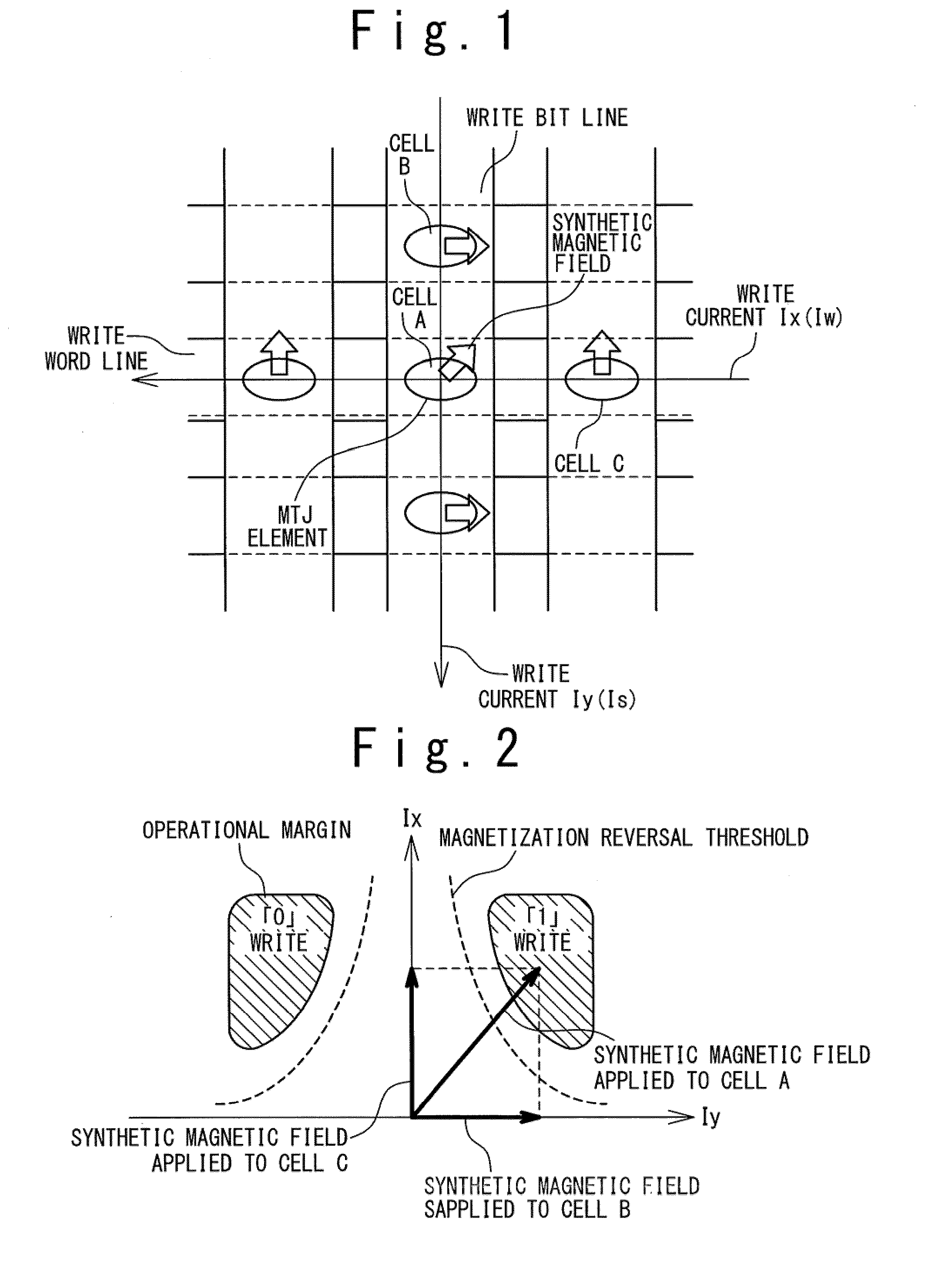Semiconductor storage device
a storage device and semiconductor technology, applied in the field of semiconductor storage devices, can solve the problems of difficult to perform high-speed write operations at 100 mhz or more, complicated current source circuits, and limited read speed of 2t1mtj cells, so as to achieve high-speed write operations and high-speed read operations without cell area overhead
- Summary
- Abstract
- Description
- Claims
- Application Information
AI Technical Summary
Benefits of technology
Problems solved by technology
Method used
Image
Examples
first embodiment
[0035]FIGS. 5 and 6 are circuit block diagrams illustrating a configuration of the semiconductor storage device in a first embodiment of the present invention. It should be noted that, in FIG. 5, a path of a sense current in a read operation is also illustrated. In FIG. 6, a path of a write current in a write operation is also illustrated.
[0036]The semiconductor storage device 1 is a 2T1MTJ cell type MRAM. The semiconductor storage device 1 includes a memory array 2, a row decoder 3, a column decoder 4, a sense amplifier 5, a first switch section 6, a second switch section 8, and a selector 9.
[0037]The memory array 2 includes: a plurality of word lines WLi (i=0 to n: n is a natural number); a plurality of read bit lines RBLj and / RBLj (j=1 to m: m is a natural number); a plurality of write bit lines WBLj and / WBLj; a plurality of memory cells Cij (i=0 to n, j=0 to m); two reference word lines WLR0 and WLR1; and a plurality of reference cells R0j and R1j (j=0 to m). It should be note...
second embodiment
[0103]FIG. 14 is a circuit block diagram illustrating a configuration in a second embodiment of the semiconductor storage device of the present invention. It should be noted that the path of the sense current in the read operation is also illustrated in FIG. 14.
[0104]In order to further reduce the load capacitance of a read bit line RBL, this embodiment is designed differently from the first embodiment in that the memory array 2 is divided into a plurality of memory arrays 2-r (r=0 to p: p is a natural number). It should be noted that, in this embodiment, the arrangement of the memory cells C and the write operation in each memory array 2-r are the same as those in the first embodiment, and therefore descriptions thereof are omitted. It should be also noted that although the description is given of FIG. 5 on an assumption that two memory cells C are simultaneously selected, it is assumed in FIG. 14 that one memory cell C is selected for convenience of description.
[0105]The semicondu...
PUM
 Login to View More
Login to View More Abstract
Description
Claims
Application Information
 Login to View More
Login to View More - R&D
- Intellectual Property
- Life Sciences
- Materials
- Tech Scout
- Unparalleled Data Quality
- Higher Quality Content
- 60% Fewer Hallucinations
Browse by: Latest US Patents, China's latest patents, Technical Efficacy Thesaurus, Application Domain, Technology Topic, Popular Technical Reports.
© 2025 PatSnap. All rights reserved.Legal|Privacy policy|Modern Slavery Act Transparency Statement|Sitemap|About US| Contact US: help@patsnap.com



